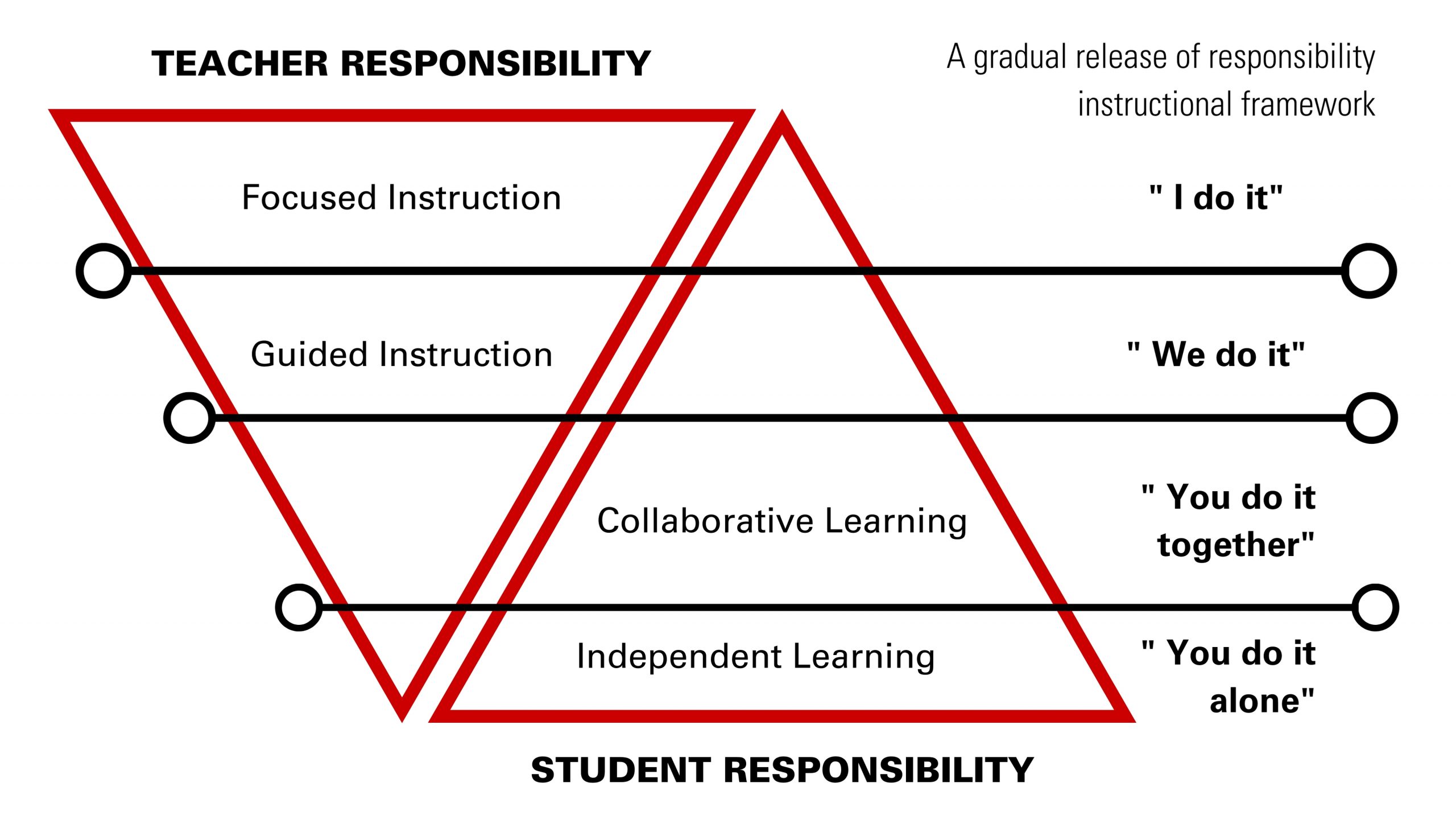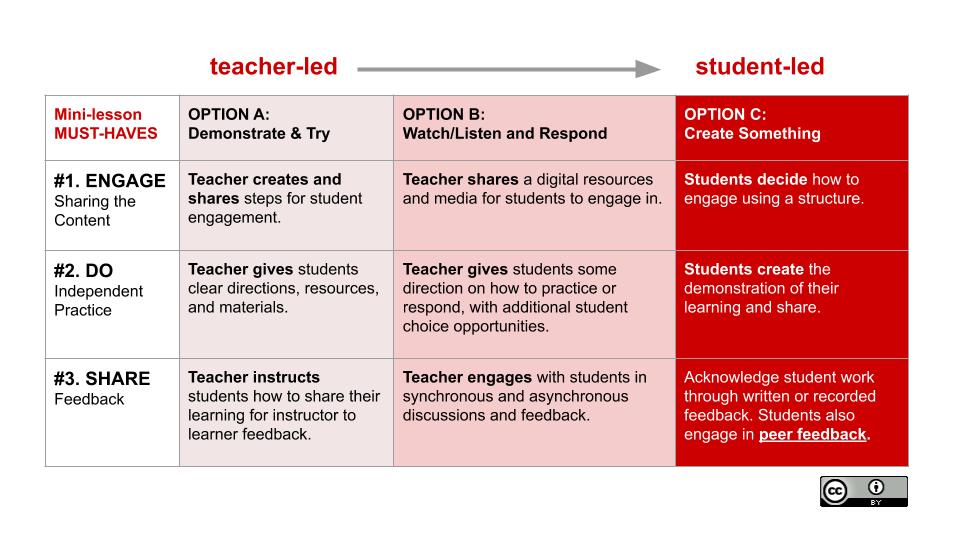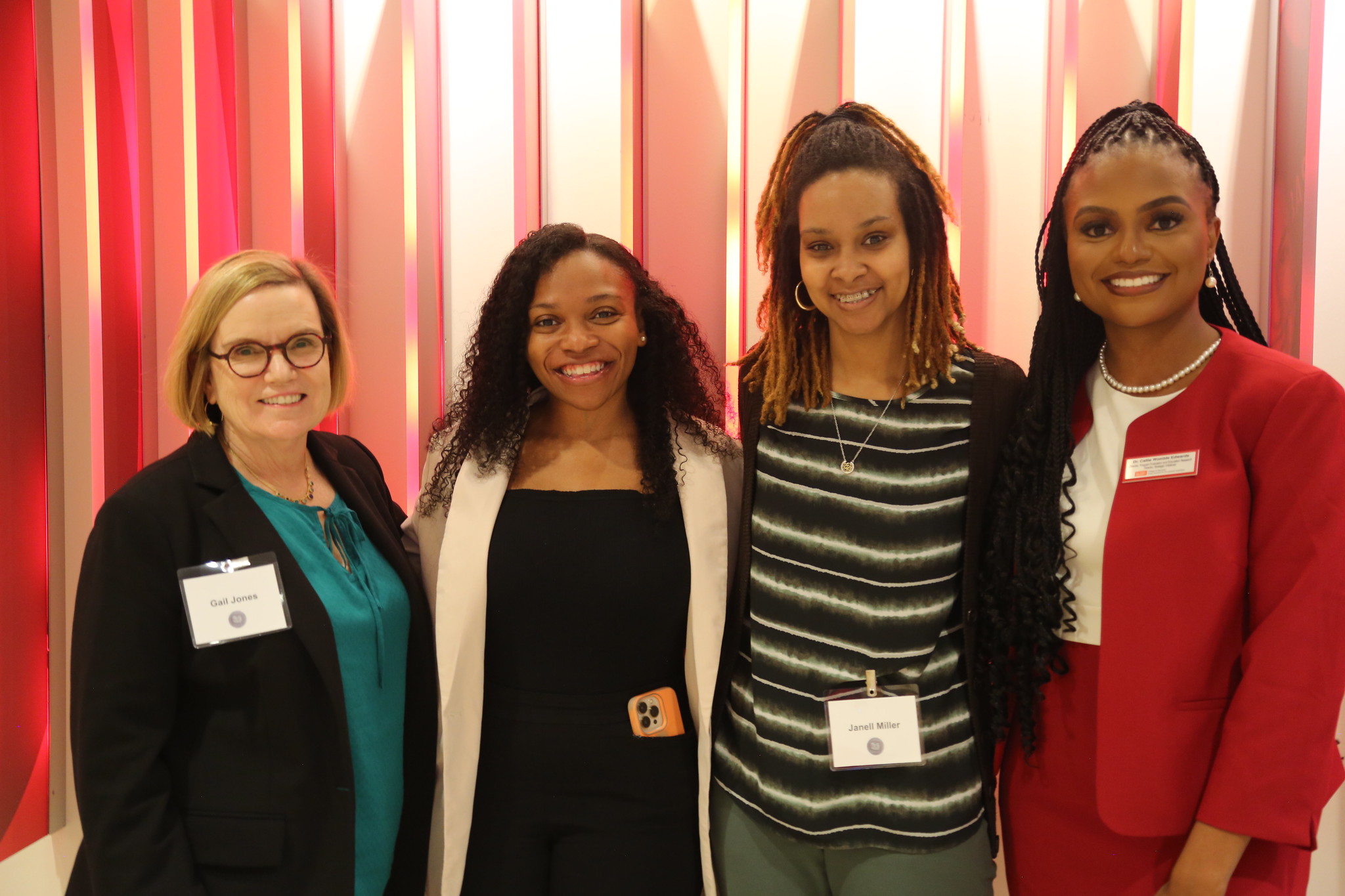Looking Back to Think Forward: Reflecting on 9 weeks of remote learning in order to plan for the future
The speed at which we all moved to accommodate our students during this crisis is unprecedented and staggering. We never signed up for this and few believed that it would really happen, but here we are: in a pandemic finding teachable moments that extend above and beyond any notions we had of the 2019-2020 school year. How can we begin to ‘tap the breaks’ and reflect after such a whirlwind? Here are my takeaways from the last nine weeks and some tips for self-reflection as we, hopefully, begin to slow down and think about what is next.
—
On March 12, 2020, I found myself standing in the media center of a school amidst the brightly colored collaborative-seating, the books neatly organized by genre, and motivational posters and sayings lining the walls reminding me that “Reading is FUN-damental” and that “If it doesn’t challenge you, it won’t change you.”
A group of educators sat with devices open, participating in the face-to-face professional development I was facilitating. Everything was moving along as planned, but it was obvious we were all distracted – distracted by this talk of something called the Coronavirus.
Some laughed at the fuss: they joked how this could not possibly spread to their rural area and that it was not something they needed to be concerned about. Moreover, the thought that school would be closed was preposterous. I recall the faces of the first-year teachers were ones of mild terror while the expressions of the veteran teachers were resolute that it would “never come to that.” Yet, the topic kept coming up every 20 minutes or so. I made the decision to scrap the material planned for the afternoon and spent the duration of our lunch break cobbling together a remote learning “emergency” tips and strategies list to use in the event the unlikely were to happen. It was received with mild interest, but again, “we probably won’t need it,” they said.
That list inevitably became a blog post published a few days later when the state of North Carolina announced that schools would be closed until May 15th and then, ultimately, remain closed for the duration of this school year. Since that moment, it has been nine weeks of physical distancing and non-stop research and development – all in an attempt to connect with and support thousands of teachers, leaders, and coaches who have transitioned to remote learning and teaching, literally, overnight. As I look back, it is interesting what elements and needs have come to the surface.
Simplicity is Key
There is a difference between online learning and emergency remote learning during a crisis, but rule number one is definitely ‘less is more’.
We have all heard of the KISS method, but ideal remote learning and teaching curriculum and instruction need “Keep-It-SERIOUSLY-Simple” designs with a focus on the connection to the learning. We quickly saw a shift after those early weeks of lessons going home, inch thick packets to be completed by the week’s end and 6-7 hour learning schedules being handed to parents. It was too much, too complex. The lessons taught in the classroom and time spent within the school walls did not directly translate to the remote learning setting. Thus simple models, like those shared by Kristin Ziemke, highlighting simple lesson formats, quickly gained traction. Yet, these models are not new. They rely on explicit instruction, i.e. “I do – We do – You do” lesson design, also known as Gradual Release of Responsibility, (Pearson & Gallager, 1983). While this model is built on several theories, when combined with opportunities for students to learn in collaboration with their peers (“you do it together”), it creates an impactful learning structure (Fisher & Frey, 2007).
These phases of learning are mapped, indicating the share of responsibility that students and teachers have in each:
 From Better Learning Through Structured Teaching: A Framework for the Gradual Release of Responsibility (2nd ed.), by D. Fisher & N. Frey, 2013, Alexandria, VA: ASCD. Copyright 2013 by ASCD.
From Better Learning Through Structured Teaching: A Framework for the Gradual Release of Responsibility (2nd ed.), by D. Fisher & N. Frey, 2013, Alexandria, VA: ASCD. Copyright 2013 by ASCD.
I continued to simplify these ideas in my own instruction to: “Engage”, how the teacher shared content and expectations with students; “Do” or the supportive opportunity to practice within the action taking place within the lesson; and, finally, “Share” the demonstration of learning or product that is created by the student. Each stage of the learning also incorporates continuous interactions — in the form of peer review, learner to learner collaboration, and learner to teacher feedback as is realistic to the educator’s remote learning situation and lesson focus. I even went as far as to create what I call a “Mix and Match” lesson template for educators (inspired by the work of Katie Muhtaris). The model includes these mini-lesson “must-haves” but also highlights options that can be used to construct impactful remote learning lessons based on the depth of teacher-led direction or translated to create a realistic choice-board for a student’s self-driven learning experience.
 Summary adapted Mini-lesson Mix & Match, Jaclyn B. Stevens, April 15, 2020. See full modification and guides. Inspired by Digital Learning and Reading Workshop from @KatieMuhtaris.
Summary adapted Mini-lesson Mix & Match, Jaclyn B. Stevens, April 15, 2020. See full modification and guides. Inspired by Digital Learning and Reading Workshop from @KatieMuhtaris.
Feedback from educators, as well as instructional coaches, agreed that when focused learning “chunks” are targeted within instruction, it fosters more communication, better demonstrations of learning, and less stress on teachers and students alike. Educators must mix-and-match in order to find the right combinations that work for their remote learning instruction. These decisions can be based on the size of their classes, the needs of their students, and the opportunities that can be created for differentiation and personalization. The foundations of successful learning and teaching don’t change because the environment in which the learning happens has changed; we just have to come at it differently, and while there is no one right answer, we are finding that keeping it simple and focused is working.
Grace > Grades
The panic we all felt was perfectly understandable. The strain that followed was compounded by obstacles, unknowns, and elements out of our control. As with all swift and drastic change, it is a time to fail forward, learn, rethink, and re-tool. Our circumstances, however, did not offer the pause many of us, (and our students and their families), felt was needed to get to that mindset let alone manage the new demands, tasks, and expectations placed upon us both professionally and personally in times of crisis. Thus, the implementation of Social and Emotional Learning (SEL) has never been more applicable and important.
Though it has been a mainstay of education, countless webinars, trainings, and resources have emerged in these weeks incorporating SEL and the CASEL SEL framework. (It is even highlighted as its own principal within the Instructional Design Principles for Remote Teaching and Learning recently created by the Friday Institute and NCDPI.) Infusing SEL into our instruction can not only help students learn better but offer an interruption to the stress and trauma, providing methods to manage their experiences and emotions. Its five core competencies – self-awareness, self-management, responsible decision-making, social awareness, and relationship skills – also offer impactful remote learning skills and strategies.
One of these effective practices has been making the concerted effort to connect as often as possible. Instructional coaches and leadership have offered regularly scheduled synchronous occasions to check-in with informal “Coffee Chats” and teachers have offered their students and their families regular office hours for support. More formal connections are seeing the benefits of using Single Point Rubrics (Dietz, 2007 via Fluckiger, 2010). Like holistic and analytic rubrics, it breaks the aspects of an assignment or goals down into achievement levels for a set of criteria, clarifying expectations. This systematic approach, however, differs by providing moments for support and guidance while crafting a collaborative description of successful work between the learner and the teacher or coach. Without placing boundaries for the learner, more attention is placed on the work versus the grades and creates more flexibility without sacrificing the clarity of the learning goals and expectations.
This rubric has also supported families in helping their children learn. Family members have the chance to clearly understand the teacher’s expectations (center column) within a lesson while also providing space for additional feedback to the teacher based on their observations of the student’s learning — noting where their child struggled and where they excelled (left and right columns). This feedback loop fosters connection while modeling and creating strategies for organization, planning, and opportunities for self-regulation — all activities supported by the SEL framework.
Likewise, the sharing of stress-reduction activities and mindfulness strategies in these last weeks before the close of school has made an impact on how teachers and students are maintaining their motivation and momentum in the absence of end-of-year social gatherings and testing. Upon reviewing so many ideas being shared across social media, I compiled a brainstorm of motivational activities correlated to the SEL framework to model both how a teacher could infuse these skills into their curriculum and continue to foster a culture of community. It should not be perceived as an additional lift but as something supported by our practices and interwoven into our disciplines and content. We just need to tease them out, and our remote learning experiences have reminded us of the value and continued worth of Social and Emotional Learning.
Self-Care Check-in and Check-up
The most distressing realization I had was upon reviewing feedback from educators across our state after a webinar last week. It came when asking them how they were managing to care for themselves. It is no mystery that educators have a high-stress job on a regular day. A study by the advocacy group, Alliance for Excellent Education, reports that 40-50% of new teachers leave within their first five years on the job due to stress. It is also no surprise that our emergency remote learning situation has amplified educator stress considerably. I was heartbroken to read that educator after educator in our feedback form found it necessary to give us thanks for simply asking the question, “How are you doing?”
No one had asked them.
Here they were, two months in, getting information on how to support their students, connect to families, and how to foster empathy, but no one had stopped to consider them and, more importantly, teachers had not stopped to consider and check-in with themselves. When they did, most reported that they were not doing well.
I myself have been working long hours each week, not eating well, forgoing exercise and, while I was continually sharing resources about self-care and the importance of brain breaks and moving, I was not taking the advice I was sharing. We must fill our own cup if we are expected to fill the cup of others. It is in everyone’s best interest that we take care of ourselves, set boundaries, and remind ourselves that not everything is on us to accomplish. But instead of asking, “How are you doing”, ask “What are you doing to take care of yourself”, or “How are you taking care of yourself this week?” or even, “What has been the best thing to happen to you today?” in order to shift towards hoping over just coping.
A graphic we have been sharing from day one speaks volumes:

Consider the things that currently matter most and the things that are within the scope of our control. That is what we need to focus on. A message worth reminding ourselves, but also one that needs to be shared with students and their families. Yet, there is one additional thing I recommend should go in the center of our Venn diagrams: self-reflective practice.
Reflective Practice: How are you Looking back to think forward?
Self-reflective teaching practices are something we are taught in the early years of our teaching experience — to capture thoughts, takeaways, pluses, deltas, and ideas, etc. More than once over these weeks I have heard veteran teachers proclaiming that they felt like they were back in the first few years of their teaching profession — and they are not wrong. For many of us, we had to hit a “restart” button. On the other hand, consider all we have accomplished during this time, all that has changed, and all the strategies we will take with us to enhance and transform our practices, be they remote, face-to-face, online, or otherwise. All it takes is simply asking yourself some questions and capturing your thoughts while they are still current. For example:
- In what ways did you create positive learning and teaching moments? How can you leverage the strategies that made these moments possible for the future?
- What were the challenging moments? What made them challenging? How would you respond next time?
- What excited you? What excited your students?
- How have your communications changed and what has been the impact on students? On families? On instruction? Etc.
- In which ways did your students surprise you most? In which ways did you surprise yourself?
As I write this, it is difficult to ask exhausted educators, many of whom are just trying to motivate both themselves and their students to make it to the “finish line”, to stop and review their remote learning experiences. Many just want to get to a point where they can simply rest and come back to the idea of reflective practice another day, yet our considerations and contemplation are best when fresh. The goal is to look for what is working and what is lacking. Do not become focused on fixing anything, but instead celebrate what has gone well, identify strengths, and use them to bolster opportunities for growth. This will require honesty, without rationalization or thoughts of mediocrity or fear. It is a time to reflect, iterate, and improve based on what is important and focusing on what really matters. Whether it be noted in a journal, soundbites recorded on a reflective walk, or a blog like this one — capture those thoughts!
I am hard-pressed to think of any of the strategies referenced in this blog going away upon our return to “school as normal”, and we know it will never be the way it was. We began this journey in disbelief, which was quickly replaced by action, or more probably, panic. Yet week after week we tried and failed forward, growing ourselves and finding strategies and practices that worked. We were reminded of the foundations of our practice and that we could still create teachable moments amidst a crisis. For the last 10 years, I have worked to foster a reimagining of what learning and teaching can be from media centers, classrooms, and lecture halls all across our state — but it yielded only pockets of risk-taking and innovation. Looking back over the last two months, however, though it was not perfect, we have made more strides and turned 200+ years of education on its ear; all while showing the nation and the world what it takes to truly be an EDUCATOR. Just like that media center poster says, “If it doesn’t challenge you, it won’t change you”, and we, educators, have risen to the challenge time and time again. Not because we were told to but because it was the right thing to do for our students. It was necessary, and we have been changed as a result. Changed for the better. Changed for whatever the future will bring. ■
—
Jaclyn B. Stevens coaches and assists K-12 educators, ITFs, and Administrators to adapt, not adopt – fostering initiatives to transform professional learning through changes in pedagogical shifts and meeting the needs of all learners to champion creativity and innovation as a Research Scholar with the Friday Institute with the College of Education at North Carolina State University.
@jaclynbstevens | jlbell@ncsu.edu
Fisher, D., and Frey, Nancy. (2013). Gradual Release of Responsibility: I do, We do, You do. Engaging the adolescent learner. Retrieved from: https://keystoliteracy.com/wp-content/uploads/2017/08/frey_douglas_and_nancy_frey-_gradual_release_of_responsibility_intructional_framework.pdf
Dietz, Mary E.. (2007, Dec 8). Journals as Frameworks for Professional Learning Communities. Retrieved from: https://books.google.com/books?id=Ww1EBAAAQBAJ&printsec=frontcover&source=gbs_ge_summary_r&cad=0#v=onepage&q&f=false
Fluckiger, Jarene. (2010). Single Point Rubrics: A tool for responsible student self-assessment.The University of Nebraska at Omaha. Retrieved from: https://digitalcommons.unomaha.edu/cgi/viewcontent.cgi?referer=&httpsredir=1&article=1004&context=tedfacpub
Haynes, Mariana. (2014, July 17). On the Path to Equity: Improving the Effectiveness of Beginning Teachers. Alliance for Excellent Education. Retrieved from: https://all4ed.org/reports-factsheets/path-to-equity/
Stevens, Jaclyn. (2020, April 29). Maintaining Momentum in Remote Learning – Actionable Ideas with an SEL Lens. PDF. https://drive.google.com/file/d/1wEIxPUju7miJcTAxZGLTDX_a1c5A8feo/view?usp=sharing
Stevens, Jaclyn. (2020, April 15). Mini-Lesson Mix and Match Template. Friday Institute for Educational Innovation. Retrieved from https://docs.google.com/document/d/1CG2ITR2K4aLSzTItlrptESCRUNkvMsGhLTQbeKEDh-g/edit?usp=sharing
Ziemke, Kristin. (2020, March 18). Structuring a video mini-lesson. Youtube. https://www.youtube.com/watch?v=odHvPVLrZEU&feature=youtu.be.
Image by Gerd Altmann . Pixabay.




